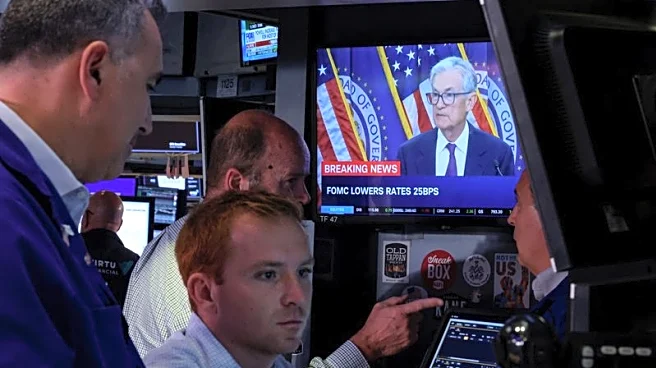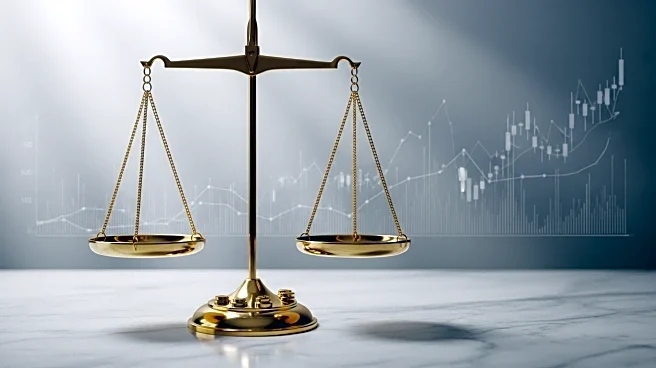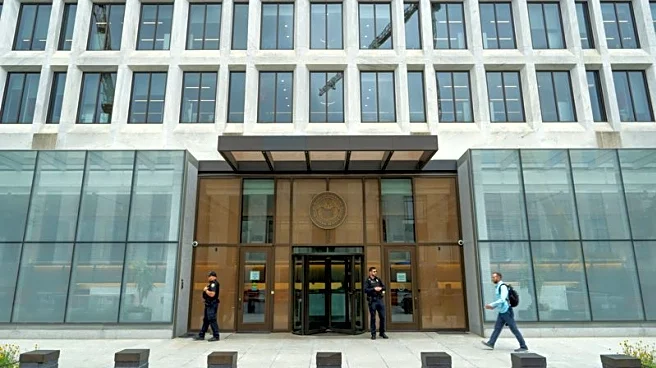What's Happening?
The Federal Reserve has reduced interest rates by a quarter of a percentage point, with plans for further cuts this year. This decision comes amid signs of a weakening job market and broad support from President Trump's appointees. Stephen Miran, newly appointed as a Fed governor, dissented, favoring a larger rate cut. The Fed's projections indicate concerns about inflation and unemployment, with policymakers focusing on risks to the labor market. Fed Chair Jerome Powell emphasized the need to prevent further softening of the labor market, citing low hiring rates and potential layoffs.
Why It's Important?
The Fed's rate cut reflects its response to economic challenges, including Trump's trade policies and their impact on inflation and growth. Lower rates aim to stimulate the economy but may risk higher inflation. Miran's dissent highlights the tension between political influence and the Fed's independence. The decision will affect borrowing costs, consumer spending, and business investments, influencing overall economic stability. As the Fed navigates these challenges, its ability to maintain independence and make unbiased policy decisions is crucial for long-term economic health.
What's Next?
The Fed plans additional rate cuts at upcoming meetings, with projections extending to 2028. Policymakers will continue to assess economic data and adjust their views on inflation, unemployment, and growth. Miran's dissent may influence future discussions on the Fed's policy direction and its independence. Stakeholders will monitor the Fed's actions and Trump's responses, as they could shape future economic policy and impact the central bank's governance.
Beyond the Headlines
The Fed's decision underscores the complex interplay between economic policy and political pressures. The potential for increased inflation due to tariffs and trade policies challenges the Fed's ability to manage monetary policy effectively. Miran's dissent raises ethical and governance questions about the Fed's independence and its role in safeguarding economic stability. This situation may prompt discussions on reforms to protect the Fed's autonomy and reinforce its impartiality.











